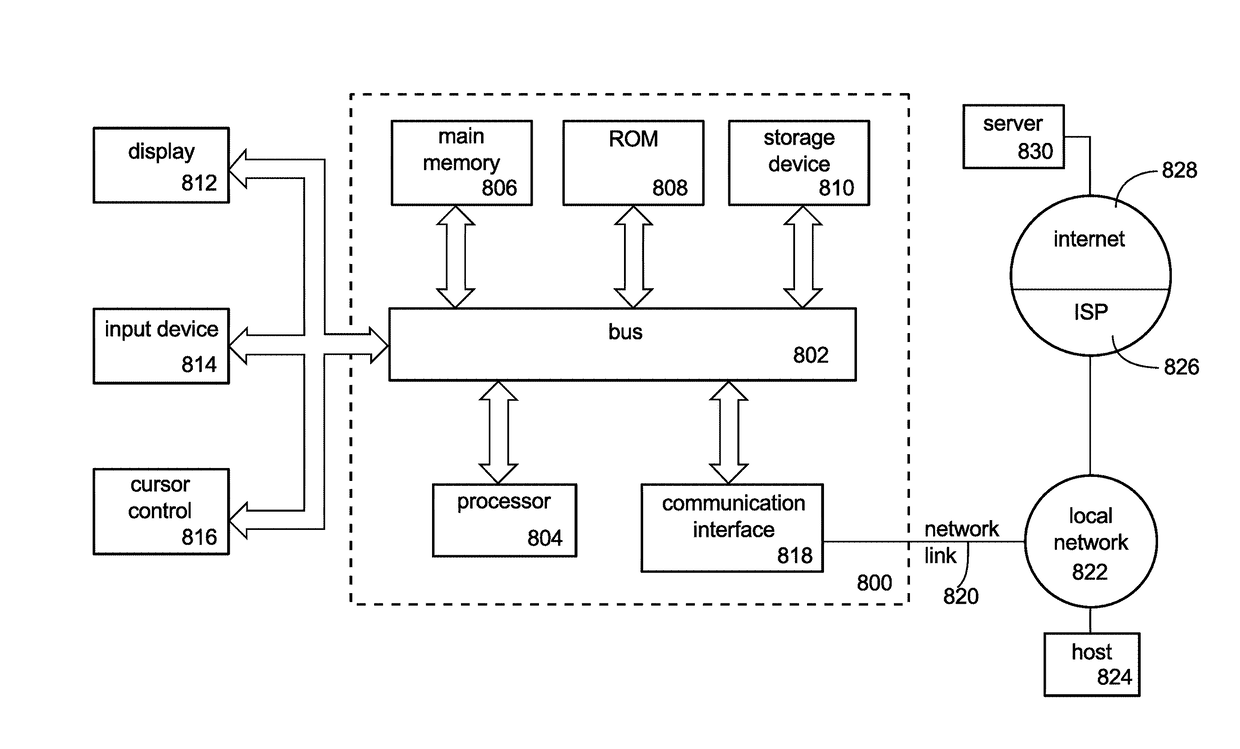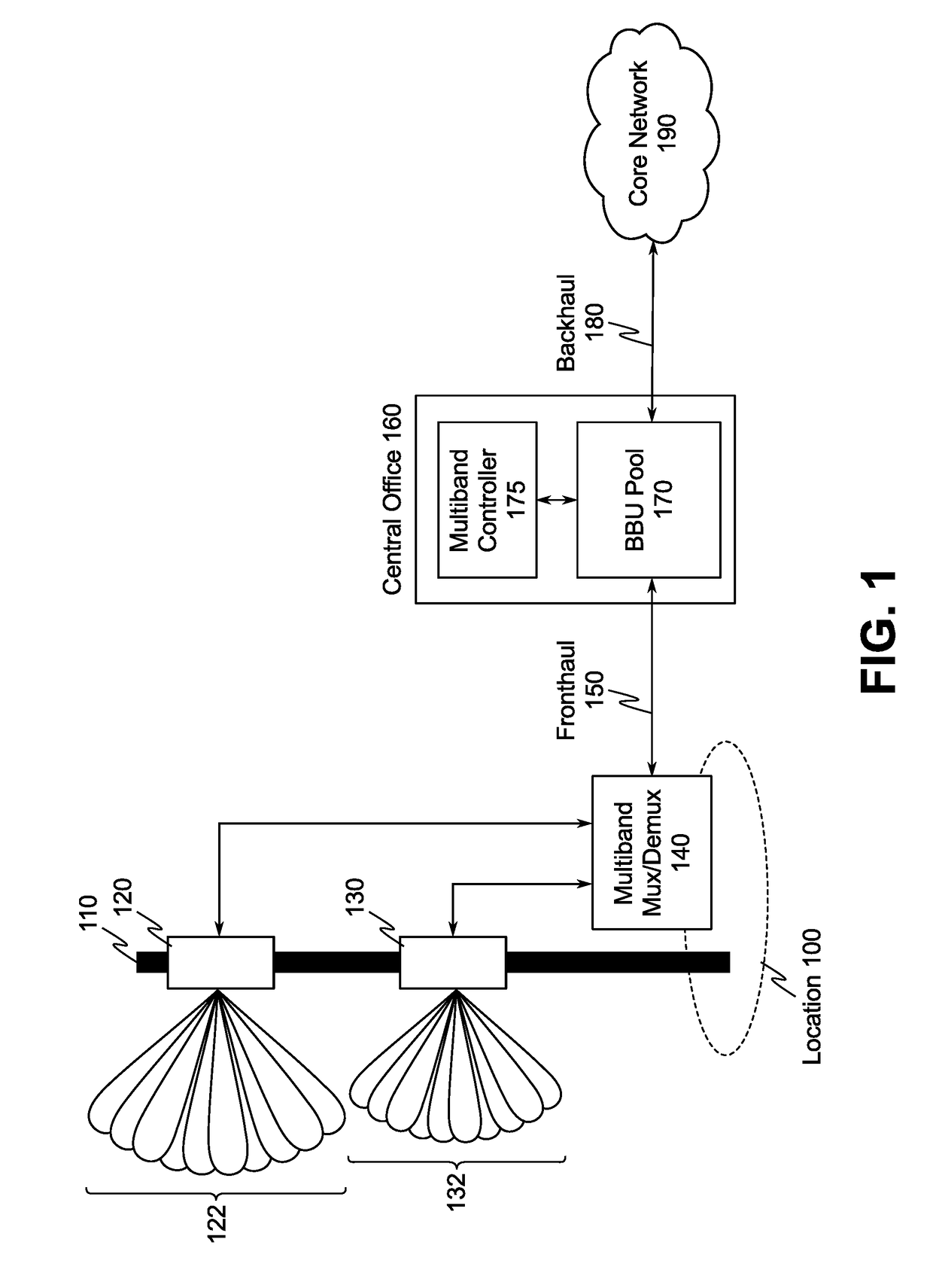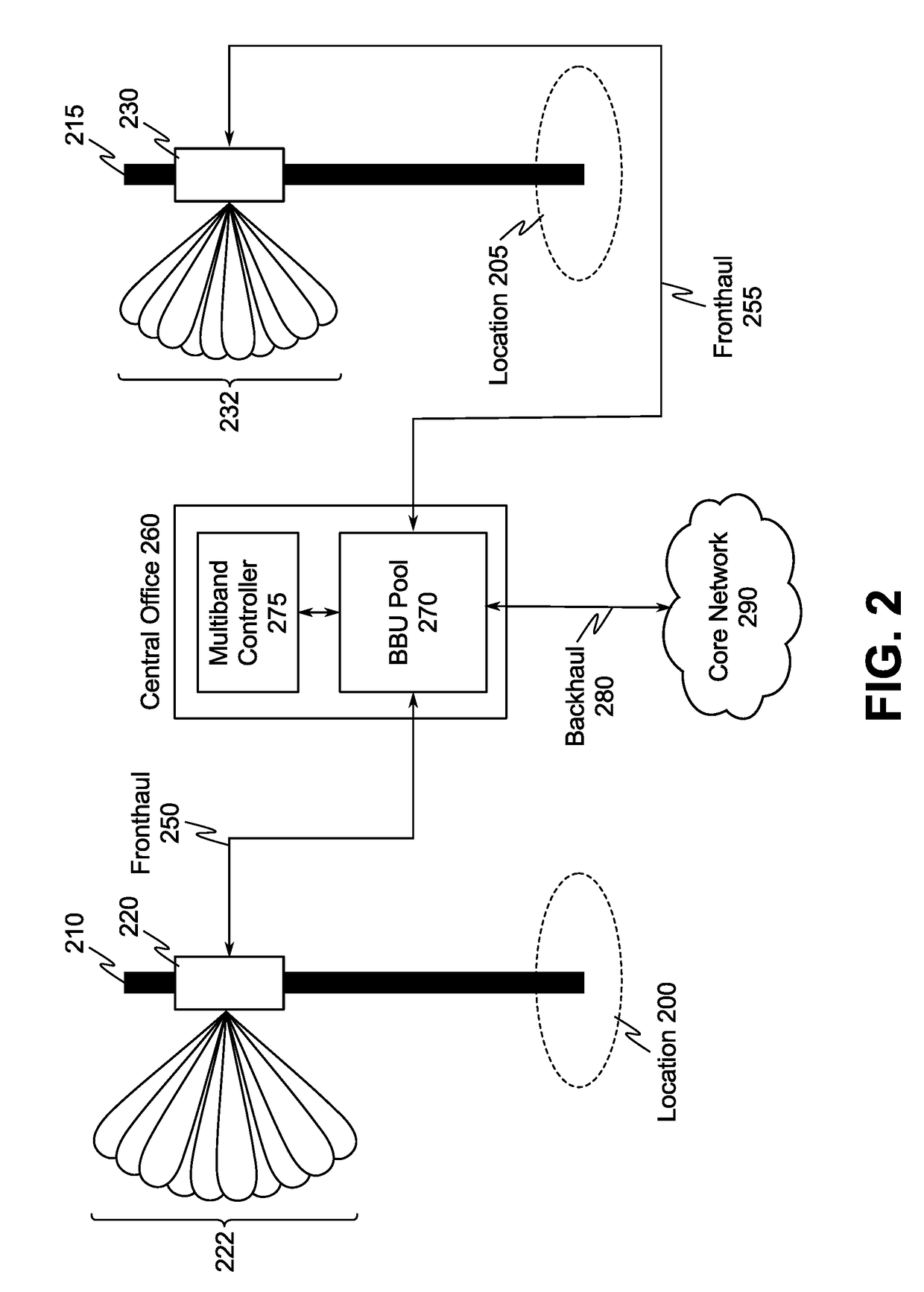Band assignment for user equipment on multiband advanced wireless communications networks
a wireless communication network and advanced wireless technology, applied in wireless communication, data switching networks, site diversity, etc., can solve the problems of increasing the density of base stations, affecting the use of users, and shortening the wavelength of millimeter wave frequency bands
- Summary
- Abstract
- Description
- Claims
- Application Information
AI Technical Summary
Benefits of technology
Problems solved by technology
Method used
Image
Examples
Embodiment Construction
[0012]In the following detailed description, numerous specific details are set forth by way of examples in order to provide a thorough understanding of the relevant teachings. The techniques described below provide solutions for efficient and effective assignments of UE devices to respective bands on multiband advanced wireless communications networks. However, it should be apparent that the present teachings may be practiced without such details. In other instances, well known methods, procedures, components, and / or circuitry have been described at a relatively high-level, without detail, in order to avoid unnecessarily obscuring aspects of the present teachings.
[0013]FIG. 1 illustrates an example of a system included in a multiband millimeter wave wireless communication network. At a first geographic location 100, a first remote radio head (RRH) 120 and a second RRH 130 are deployed, and a multiband multiplexer / demultiplexer 140 is also deployed and communicatively coupled to the ...
PUM
 Login to View More
Login to View More Abstract
Description
Claims
Application Information
 Login to View More
Login to View More - R&D
- Intellectual Property
- Life Sciences
- Materials
- Tech Scout
- Unparalleled Data Quality
- Higher Quality Content
- 60% Fewer Hallucinations
Browse by: Latest US Patents, China's latest patents, Technical Efficacy Thesaurus, Application Domain, Technology Topic, Popular Technical Reports.
© 2025 PatSnap. All rights reserved.Legal|Privacy policy|Modern Slavery Act Transparency Statement|Sitemap|About US| Contact US: help@patsnap.com



